Making and Spending Money
Making and spending money is a critical part of financial responsibility.
Managing your money requires figuring out how much money you have coming in, and how you spend that money going out. The money coming in is your income, and the money going out is your expenses. You can compare your income with your expenses and make a plan for how to spend in the future, also known as a budget.
Sources of Income
In most cases, income comes from a salary or wages, government benefits (such as Social Security), and investment income. Income can be variable, meaning it changes, which is one of the reasons that budgets are not set in stone.
Expenses
Just as fast as income arrives, money goes back out to pay for expenses. Expenses can also grow over time to eventually include housing, utilities, groceries, phone, internet, transportation—and that’s just basic monthly expenses. There’s also insurance, healthcare, credit card bills, and clothing, among countless other expenses that are paid with income.
In addition to the funds to pay bills, there are other expenses that should be built into a spending plan, like money to build a savings account, grow an investment portfolio, and plan for retirement.
There are two types of expenses that are important to your budget. The first is fixed expenses that stay the same each month. These are expenses like housing, a phone bill, and car payments. The other category is variable expenses. These expenses can change from month to month and you tend to have more control over them. Entertainment, fast food, and hair products, are examples of variable expenses.
The Numbers in Black and White
There are just a few simple steps involved in getting a handle on your monthly income and expenses:
- Record your monthly income.
- List your fixed monthly expenses.
- Compile a list of your variable monthly expenses.
- Compare what’s coming in with what’s going out.
If you don’t have enough income, or if you spend more than you have, your cash flow will be negative, rather than positive. This can make it much harder to pay your bills, secure loans, and afford the things that you want to buy. It also means that you may be relying on credit cards or other forms of debt to make ends meet.
Turning a negative cash flow into a positive one is the only way to lead a secure financial life and set the stage for a successful financial future. Sometimes you’ll face expenses that are out of your control. If an emergency comes up and you have to borrow money or use a credit card to pay for it, reduce other expenses as much as you can to pay back the money you borrowed quickly.
The easiest way to balance your budget is to reduce your spending. Take a look at your variable expenses that are nice to have, but not necessary. These are the expenses that should be cut first.
Another good option is to find other sources of income. This could be a part time job, selling crafts, or finding neighbors who need yard work done. It's generally harder to find extra income than to cut expenses, but for some people it’s the perfect solution.
When your cash flow becomes positive, you should consider putting aside a little each month to help cover unexpected expenses you might have in the future.
Understanding your income and expenses will save you from a lot of financial problems in the future. A balanced budget can help you feel confident that you’ll have the money you need when you need it.
This article has been republished with permission. View the original article: Making and Spending Money.




Post your comment
Comments
No one has commented on this page yet.
RSS feed for comments on this page | RSS feed for all comments